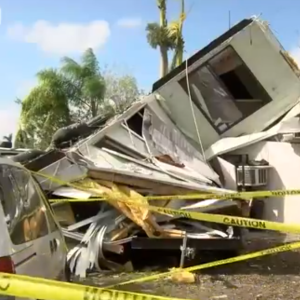NAIC plan to ID risk, coverage gaps
 Earlier this month, the National Association of Insurance Commissioners (NAIC) announced a countrywide coordinated effort known as the National Climate Resiliency Strategy for Insurance to help fortify state insurance markets and streamline data collection in the industry. Better communication between states about floods, storms, and fires will allow regulators to address gaps in underwriting that have emerged with the recent increase in climate-related catastrophes in certain places like Florida. The plan follows a critical July 2023 report by the Federal Insurance Office (FIO) that analyzed climate issues and gaps in U.S. insurance supervision and regulation. In it, FIO commended initial efforts by some state regulators and the NAIC, but noted that “these efforts are fragmented across states and limited in several critical ways.”
Earlier this month, the National Association of Insurance Commissioners (NAIC) announced a countrywide coordinated effort known as the National Climate Resiliency Strategy for Insurance to help fortify state insurance markets and streamline data collection in the industry. Better communication between states about floods, storms, and fires will allow regulators to address gaps in underwriting that have emerged with the recent increase in climate-related catastrophes in certain places like Florida. The plan follows a critical July 2023 report by the Federal Insurance Office (FIO) that analyzed climate issues and gaps in U.S. insurance supervision and regulation. In it, FIO commended initial efforts by some state regulators and the NAIC, but noted that “these efforts are fragmented across states and limited in several critical ways.”
New infrastructure, such as a recently-developed Catastrophe Modeling Center and pre-disaster mitigation programs, is essential to overhauling America’s storm response under the NAIC’s new plan. “This is the first time we’re going to have a real coordinated response before the disaster happens, which is critical”, said California Insurance Commissioner Ricardo Lara, co-chair of the NAIC’s Climate and Resiliency Task Force. “The challenges we face today are unprecedented and national in scope, requiring a unified approach by our state regulators, who are the true experts in our individual markets.”

Damage from the Cottage Point Tornado in Lee County, Florida, January 17, 2022. Courtesy, WZVN-TV
To familiarize themselves with these markets and trends, the NAIC launched a data call across the U.S., collecting information from over 400 insurers on premiums, policies, claims, losses, limits, deductibles, and coverage types, and categorized them by zip code. (This is the same data call also requested by the FIO.) The NAIC will establish a Climate Risk Dashboard to help prioritize certain areas, closing protection gaps and aiding insurance availability. While the NAIC can’t actually mandate insurers, their suggestion, collaboration, and ability to streamline communication between relevant actors in the industry can help increase coverage and draw key players back into the market. The task force enlisted is hopeful that changes at the ground floor with things like zoning and construction laws will be enough to begin stabilizing coverage in areas that have been hit hard in the last several years. Mitigating even a small portion of the risk in problem areas like Florida or California could radically change the playing field on insurance availability and relieve stress on both insurance consumers and producers.
While still in its infancy, the plan is tenacious, with NAIC president Andrew Mais promising to pivot with any changes that may arise, ensuring the strategy will remain a living, breathing document. “The goal of the strategy is to drive faster and more effective risk reduction by state insurance regulators to ensure that insurance continues to be available and reliable as communities across our nation face climate risk”, said Mais. “The document will live and evolve, as will our approach.”
LMA Newsletter of 4-29-24

